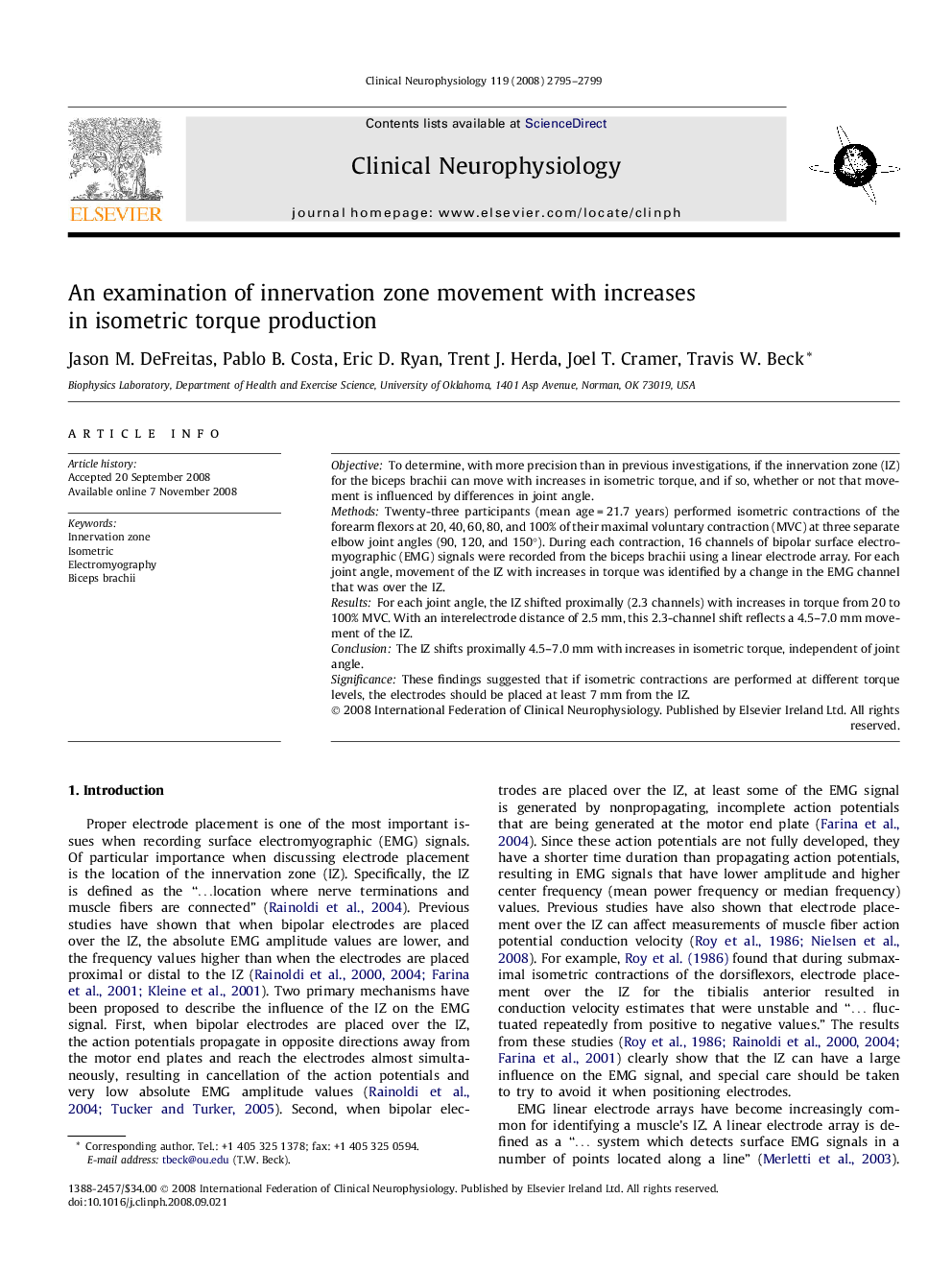| Article ID | Journal | Published Year | Pages | File Type |
|---|---|---|---|---|
| 3047562 | Clinical Neurophysiology | 2008 | 5 Pages |
ObjectiveTo determine, with more precision than in previous investigations, if the innervation zone (IZ) for the biceps brachii can move with increases in isometric torque, and if so, whether or not that movement is influenced by differences in joint angle.MethodsTwenty-three participants (mean age = 21.7 years) performed isometric contractions of the forearm flexors at 20, 40, 60, 80, and 100% of their maximal voluntary contraction (MVC) at three separate elbow joint angles (90, 120, and 150°). During each contraction, 16 channels of bipolar surface electromyographic (EMG) signals were recorded from the biceps brachii using a linear electrode array. For each joint angle, movement of the IZ with increases in torque was identified by a change in the EMG channel that was over the IZ.ResultsFor each joint angle, the IZ shifted proximally (2.3 channels) with increases in torque from 20 to 100% MVC. With an interelectrode distance of 2.5 mm, this 2.3-channel shift reflects a 4.5–7.0 mm movement of the IZ.ConclusionThe IZ shifts proximally 4.5–7.0 mm with increases in isometric torque, independent of joint angle.SignificanceThese findings suggested that if isometric contractions are performed at different torque levels, the electrodes should be placed at least 7 mm from the IZ.
